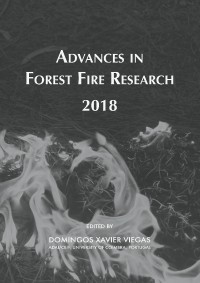Please use this identifier to cite or link to this item:
https://hdl.handle.net/10316.2/44607| DC Field | Value | Language |
|---|---|---|
| dc.contributor.author | Fernandez, Fabien | |
| dc.contributor.author | Guillaume, Bruno | |
| dc.contributor.author | Porterie, Bernard | |
| dc.contributor.author | Ganteaume, Anne | |
| dc.contributor.author | Guerra, Fabien | |
| dc.date.accessioned | 2018-11-09T15:13:15Z | |
| dc.date.accessioned | 2020-09-06T17:31:40Z | - |
| dc.date.available | 2018-11-09T15:13:15Z | |
| dc.date.available | 2020-09-06T17:31:40Z | - |
| dc.date.issued | 2018 | - |
| dc.identifier.isbn | 978-989-26-16-506 (PDF) | |
| dc.identifier.uri | https://hdl.handle.net/10316.2/44607 | - |
| dc.description.abstract | Fires in wildland-urban interfaces (WUIs) are currently increasing because of the urban sprawl entailing larger contact zones with wildland areas and the on-going climate change, increasing the frequency and severity of extreme fires, especially in Mediterranean ecosystems. Heterogeneous vegetation in the WUIs, including both natural and ornamental species, allows the fire to propagate from the wildland to housing, which can be responsible for loss of life and considerable property and environmental damages. In the present study, the raster-based fire spread model SWIFFT (De Gennaro et al., 2017) is enhanced to account for fire-induced thermal damages on vegetation and building materials at the WUI. This approach is applied to two historical WUI fires. It is found that the enhanced model is particularly well suited first, to assess the changes in fire behavior, as the fire travels from the natural to the ornamental vegetation, and, second, to estimate damages on buildings. It can also be used to evaluate the effectiveness of fuel treatment strategies on wildfire exposure at the WUI scale, depending on local conditions of wind, topography and vegetation. | eng |
| dc.language.iso | eng | - |
| dc.publisher | Imprensa da Universidade de Coimbra | por |
| dc.relation.ispartof | http://hdl.handle.net/10316.2/44517 | por |
| dc.rights | open access | - |
| dc.subject | Forest fire | eng |
| dc.subject | raster-based fire spread model | eng |
| dc.subject | wildland-urban interface | eng |
| dc.subject | WUI | eng |
| dc.subject | fuel treatments | eng |
| dc.subject | building vulnerability | eng |
| dc.title | Modelling fire spread and damage in wildland-urban interfaces | por |
| dc.type | bookPart | por |
| uc.publication.firstPage | 818 | - |
| uc.publication.lastPage | 825 | - |
| uc.publication.location | Coimbra | por |
| dc.identifier.doi | 10.14195/978-989-26-16-506_90 | - |
| uc.publication.section | Chapter 4 - Fire at the Wildland Urban Interface | por |
| uc.publication.digCollection | PB | por |
| uc.publication.orderno | 90 | - |
| uc.publication.area | Ciências da Engenharia e Tecnologias | por |
| uc.publication.bookTitle | Advances in forest fire research 2018 | - |
| uc.publication.manifest | https://dl.uc.pt/json/iiif/10316.2/44607/204323/manifest?manifest=/json/iiif/10316.2/44607/204323/manifest | - |
| uc.publication.thumbnail | https://dl.uc.pt/retrieve/11059783 | - |
| uc.publication.parentItemId | 55072 | - |
| uc.itemId | 68875 | - |
| item.grantfulltext | open | - |
| item.fulltext | With Fulltext | - |
| Appears in Collections: | Advances in forest fire research 2018 | |
Files in This Item:
| File | Description | Size | Format | |
|---|---|---|---|---|
| modelling_fire_spread_and_damage.pdf | 1.29 MB | Adobe PDF |  |
Items in DSpace are protected by copyright, with all rights reserved, unless otherwise indicated.
